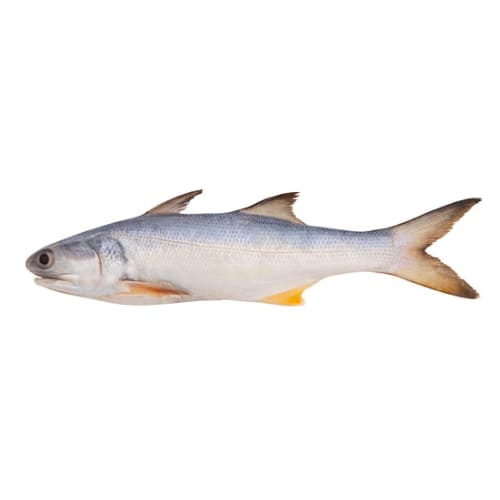

Introduction
Indian Salmon – Rawans, a Greatly underrated and less known fish of the Arabian Sea, the Indian Salmon yield thick, sizeable, and essentially boneless fillets. They are often available, have a high boneless recovery rate, and can have a good shelf life. Indian salmon – rawans are excellent eating when cooked in a wide variety of ways.
Note: All our prices are based on the pre-cutting weight of the seafood. The net weight will be dependent on the type of cleaning you choose.
Introduction
Indian Salmon – Rawans, a Greatly underrated and less known fish of the Arabian Sea, the Indian Salmon yield thick, sizeable, and essentially boneless fillets. They are often available, have a high boneless recovery rate, and can have a good shelf life. Indian salmon – rawans are excellent eating when cooked in a wide variety of ways. Their firm flesh and large flakes make them absolutely ideal for barbecuing or grilling in steaks, cutlets or fillets, or Slices
Habitat
Indian Salmon is a Sea fish that mainly lives near Creeks, estuaries, and Brackish waters (A point where the river meets the Sea)
Physical Attributes
Indian Salmon has Scales on the body. Anterior 1/3 of the lower jaw with small teeth extending onto the lateral surface. Swim bladder with many appendages inserted into lateral walls of the abdominal cavity; 18–21 gill rakers on 1st-gill arch.
Size
On average, Indian Salmon size range is 0.5 kg to 5 kg per fish. However, larger sizes are also occasionally available.
Colour
Head and upper sides of trunk tinged slightly blackish brown 2nd dorsal fins and caudal fin blackish; the base of pectoral filaments dusky yellowish grading to blackish posteriorly pectoral fin membrane deep black.
Cutting Preferences
Indian Salmon is preferred for Slices, Boneless Fillets, Boneless Biscuits, and Boneless Fingers
Approx. Cutting Wastage
Health Benefits